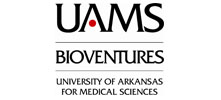UAMS Researcher Working to Commercialize Early Detection Device for Cancer
 UAMS researcher Vladimir Zharov has received a $75,000 grant from ASTA to further develop a device that would help high-risk patients suffering from cancer and cardiovascular disorders such as stroke.
UAMS researcher Vladimir Zharov has received a $75,000 grant from ASTA to further develop a device that would help high-risk patients suffering from cancer and cardiovascular disorders such as stroke.
Zharov is working with ASBTDC and UAMS BioVentures to commercialize the device.
Good stuff from our partners and friends at UAMS, ASBTDC and ASTA. Here's more from Rebecca Norman of ASBTDC:
UAMS Researcher’s Early Detection Device for Stroke and Heart Attacks Wins ASTA Award
December 3rd, 2014 by Rebecca Norman
Every year, 795,000 Americans have a stroke caused by restricted blood flow. There are also approximately one million cases of vein-based blood clots in the U.S. each year, and approximately 300,000 of these patients die. Despite circulating clots’ significance as predictive markers for preventing stroke and heart attacks, there is currently no clinically relevant early detection method.
ASBTDC client Dr. Vladimir Zharov is working to change that.
Zharov, director of the Arkansas Nanomedicine Center at the University of Arkansas for Medical Sciences, and his research team conceived a medical device in 2006 that would help high-risk patients suffering from cardiovascular disorders such as stroke as well as cancer. Working with UAMS BioVentures, Zharov began developing the device, intended to easily provide real-time monitoring of circulating tumor cells and red and white blood clots to prevent metastasis and strokes.
A recent Technology Development Program award of $75,000 from the Arkansas Science and Technology Authority will allow Zharov and his team to explore new capabilities for the device.
Zharov noted that the commercial-ready version will have the potential to inhibit – if not prevent – stroke, heart attack, and the spread of cancer using well-timed personalized therapy.
Several patents are pending for the next-generation medical device which is worn like a wrist watch, does not require blood samples, and can serve as an early warning system for cardiovascular events. The device instantly detects circulating blood clots using a photoacoustic flow cytometry platform in which the absorption of laser energy by tissues is transformed into heat, and then acoustic waves caused by the fast thermal expansion of heated zone are detected with small ultrasound transducer attached to skin.
“The expected sensitivity of our PAFC device is 100- to 1000-fold higher compared to existing methods. This technology will provide more accurate, real-time, non-invasive measurements,” said Zharov.
The TDP award will also allow Zharov’s team to develop an advanced photoacoustic flow cytometry prototype. The researchers will then test the prototype during pilot clinical trials with healthy volunteers and patients. According to Zharov, this clinical data will also help the team to better understand how to develop a commercial product and how to extend its application for early diagnosis of infections and immune system disorders.
Dr. Zharov has been a client of the Arkansas Small Business and Technology Development Center since 2004. Early this year, he reached out to the ASBTDC’s innovation consultant, Rebecca Norman, for assistance with the development of his TDP proposal application and presentation for ASTA. Zharov noted, “Previously, we had no experience with the TDP application process submission, and Rebecca Norman’s useful consultations helped a lot. Moreover, a final version of our proposal was reviewed by Rebecca.”
On the path to commercialization, Zharov and his team continue to refine and develop aspects of the device. “When we started in 2006, we just had basic experience in photoacoustics, but we’ve since made significant progress in understanding of method function, especially in vivo condition, the safety issues, and potential to increase the diagnostic sensitivity,” he said.
Dr. Zharov’s team has presented its technology at several business and scientific meetings. They predict commercial production of their various device modifications in the near few years and plan to license the products to appropriate partners within the medical device industry.
In particular, UAMS has an agreement with Cyto Wave Technologies (now named Accurexa Inc.), a company that has preliminary plans to bring the technology to market specifically for melanoma diagnosis.
